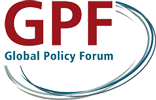News

By Bodo Ellmers
The mid-term review of Sustainable Development Goal (SDG) implementation looks sobering. When heads of state meet at the United Nations (UN) headquarters in New York on 18 and 19 September for the SDG Summit, the central topic will be how to give the 2030 Agenda for Sustainable Development new impetus for the second half of the 15-year term. A key proposal for refocusing SDG implementation is the SDG Stimulus Package, which was unveiled by the UN Secretary-General in February 2023 and has since been promoted at various policy forums.
The main objective of the package is to address the North-South financial divide in financial markets, which has become known as the “Great Finance Divide”. Particularly during the COVID-19 crisis, it became apparent that countries in the global North can obtain capital on the global financial markets at low interest rates and in almost unlimited quantities. This gives their governments the opportunity to finance necessary investments in the public interest – whether for crisis prevention or green transformation – in almost unlimited amounts, as long as the political will is there.
This opportunity does not exist, however, for countries in the global South. For them, raising capital on financial markets is significantly more expensive. The interest rate premiums they have to pay vis-à-vis governments in the global North average 5 to 8 percent. Since the central banks of the North initiated the interest rate turnaround in 2021, the situation has deteriorated dramatically. By the time the UN Secretary-General unveiled proposals for an SDG Stimulus Package this February, interest rates had already risen above 10 percent in 14 countries. Many countries had already fallen into debt crises, cutting them off from any access to fresh money, with dire consequences for the financing of public services and the well-being of their populations. In this context, long-term investments – for example, to combat climate change – are out of the question.
An extra US$ 500 billion needed for the SDGs
The SDG Stimulus Package aims to mobilize an additional US$ 500 billion in funding each year. This is intended to empower countries to invest in areas such as renewable energies, social security or the expansion of their education and healthcare systems. This “Big Push” is to come mainly from public development banks, which can extend loans at lower interest rates than private investors do. They can continue to operate in conditions where access to private financial markets exists on affordable terms. These banks have similarly favourable access to capital markets as the governments of the global North, so they can raise capital cheaply there and pass it on to the countries of the global South.
The package also includes a revolutionary call to use so-called Special Drawing Rights (SDRs) to finance a new climate fund. SDRs are an international reserve currency that can be created by the International Monetary Fund (IMF) in virtually unlimited amounts. This would put the instruments of the IMF – which is de facto a kind of world central bank – in the service of green and socioeconomic transformation. This would be in much the same way as the countries of the global North allowed their central banks to service the crisis response during the COVID-19 crisis. The main difference is that the IMF would serve all countries.
Another element under considerations is additional financial transfers from Official Development Assistance (ODA). Rich countries are called upon to finally meet the international target of providing ODA equivalent to 0.7 percent of their annual economic output. This would mean a doubling from current levels, and would mobilize an additional US$ 200 billion, mostly in the form of grants that do not have to be repaid.
Debt crisis as a key challenge
Unfortunately, however, many highly indebted countries can no longer take out new loans, even if these are offered at favourable interest rates. Their problem is that debt service to creditors consumes a good part of their national budgets, leaving no fiscal space for important spending on public goods and development. A significant pillar of the SDG Stimulus Package is therefore to reduce the debt burden through debt restructuring and cancellation.
For example, while corporate insolvencies are governed by binding insolvency law and insolvency courts have clear jurisdiction, comparable institutions do not exist for sovereign insolvencies. In his proposal for the SDG Stimulus Package, the UN Secretary-General is a harsh critic of the current “non-system” of international debt crisis management. He is calling on the international community to create effective institutions. Countries stuck in the debt trap should receive help to reduce their debt burden in time and to a sufficient extent. In addition, the package also contains proposals to release targeted funds for climate financing via debt swaps. All creditors, including development banks, are called upon to allow countries affected by shocks such as climate disasters or pandemics to temporarily suspend their debt service.
Litmus test for multilateralism
In particular, the countries of the global South – through the Group of 77 (G77) – clearly advocated for the implementation of the SDG Stimulus Package at the 2023 Financing for Development Forum in April. They have ensured that this issue will be high up the political agenda at the UN SDG Summit in September. For them, the rapid implementation of the SDG Stimulus Package is the litmus test that the countries of the global North are ready to stand in solidarity to finance the SDGs and other global challenges, including climate change.
